Experimental Study on the Mechanical Behavior and Failure Characteristics of Layered Coal at Medium Strain Rates
Abstract
1. Introduction
2. Experimental Methods
2.1. Specimens Preparation
2.2. Loading Scheme and Monitoring Techniques
3. Test Results and Discussion
3.1. Deformation Evolution and Failure Mode
3.2. Stress-Strain Behaviors and Strength Characteristics
3.3. Strain Rate and Bedding Effect on AE Characteristics
3.4. Risk Analysis of Rock Burst
4. Conclusions
- (1)
- The failure mode of coal specimens shows a noticeable bedding dependency. The post-peak stress in coal specimens with horizontal bedding decreases rapidly, clearly indicating brittle failure. These specimens generally show an overall burst failure, followed by the ejection of coal fragments in different sizes, with a high risk of rock burst. On the other hand, coal specimens with vertical bedding exhibit a tensile splitting failure, with a low risk of rock burst.
- (2)
- The UCS of coal specimens is closely related to the bedding direction and the strain rate. With increasing strain rate, the UCS and elastic modulus of specimens with horizontal bedding increases in a logarithmic function. The UCS of coal specimens with vertical bedding increases first, and then decreases as the strain rate keeps increasing, and the strain rate corresponding to the turning point is 1 × 10−3 s−1.
- (3)
- Strain rate affects the number, distribution, and energy release rate of AE events, but does not change the maximum and cumulative energy of AE events. Specimens with different bedding patterns exhibit differences in the maximum energy and cumulative energy magnitudes and in the cumulative energy curve. The strain rate effect and bedding effect on AE characteristics are essentially related to fracture initiation, propagation, and failure modes.
- (4)
- A strong correlation exists between the principal strain gradient and the local deformation and local damage. The stage in which the principal strain gradient increases significantly is the fracture initiation stage. The principal strain gradient may be a good early warning index for specimen failure.
Author Contributions
Funding
Institutional Review Board Statement
Informed Consent Statement
Data Availability Statement
Acknowledgments
Conflicts of Interest
References
- He, M.C.; Xie, H.P.; Peng, S.P.; Jiang, Y.D. Study on rock mechanics in deep mining engineering. Chin. J. Rock Mech. Eng. 2005, 24, 2803–2813. [Google Scholar]
- Biały, W. Mierzenie właściwości mechanicznych węgla, nowe urządzenia. J. Geol. Resour. Eng. 2017, 1, 15–23. [Google Scholar] [CrossRef][Green Version]
- Biały, W. Systemy odmierzające siłę przecięcia węgla—(CCFM). In Proceedings of the 14th SGEM GeoConference on Science and Technologies in Geology, Exploration and Mining, SGEM2014 Conference Proceedings, Albena, Bulgaria, 17–26 June 2014; Volume III, pp. 91–98, ISBN 978-619-7105-09-4/ISSN 1314-2704. [Google Scholar]
- Iannacchione, A.T.; Tadolini, S.C. Occurrence, predication, and control of coal burst events in the US. Int. J. Min. Sci. Technol. 2016, 26, 39–46. [Google Scholar] [CrossRef]
- Hebblewhite, B.; Galvin, J. A review of the geomechanics aspects of a double fatality coal burst at Austar colliery in NSW, Australia in April 2014. Int. J. Min. Sci. Technol. 2017, 27, 3–7. [Google Scholar] [CrossRef]
- Batugin, A. A proposed classification of the Earth’s crustal areas by the level of geodynamic threat. Geod Geodyn. 2021, 12, 21–30. [Google Scholar] [CrossRef]
- Cao, A.Y.; Jing, G.C.; Ding, Y.L.; Liu, S. Mining-induced static and dynamic loading rate effect on rock damage and acoustic emission characteristic under uniaxial compression. Saf. Sci. 2019, 116, 86–96. [Google Scholar] [CrossRef]
- Lu, C.P.; Liu, G.J.; Liu, Y.; Zhang, N.; Xue, J.H.; Zhang, L. Microseismic multi-parameter characteristics of rockburst hazard induced by hard roof fall and high stress concentration. Int. J. Rock Mech. Min. Sci. 2015, 76, 18–32. [Google Scholar] [CrossRef]
- Wang, S.L.; Hao, S.P.; Chen, Y.; Bai, J.B.; Wang, X.Y.; Xu, Y. Numerical investigation of coal pillar failure under simultaneous static and dynamic loading. Int. J. Rock Mech. Min. Sci. 2016, 84, 59–68. [Google Scholar] [CrossRef]
- Mcgarr, A. Energy budgets of mining-induced earthquakes and their interactions with nearby stopes. Int. J. Rock Mech. Min. Sci. 2000, 37, 437–443. [Google Scholar] [CrossRef]
- Mansurov, V.A. Prediction of rockbursts by analysis of induced seismicity data. Int. J. Rock Mech. Min. Sci. 2001, 38, 893–901. [Google Scholar] [CrossRef]
- He, J.; Dou, L.M.; Cai, W.; Li, Z.L.; Ding, Y.L. In situ test study of characteristics of coal mining dynamic load. Shock. Vib. 2015, 2015, 121053. [Google Scholar] [CrossRef]
- Roberts, M.; Brummer, R. Support requirements in rockburst conditions. J. South. Afr. Inst. Min. Metall. 1988, 88, 97–104. [Google Scholar]
- Kaiser, P.K.; Tannant, D.D.; McCreath, D.R. Canadian Rockburst Support Handbook; Geomech Research Centre, Laurentian University: Sudbury, ON, Canada, 1996. [Google Scholar]
- Zhang, Z.X.; Kou, S.Q.; Jiang, L.G.; Lindqvist, P.A. Effects of loading rate on rock fracture: Fracture characteristics and energy partitioning. Int. J. Rock Mech. Min. Sci. 2000, 37, 745–762. [Google Scholar] [CrossRef]
- Field, J.E.; Walley, S.M.; Proud, W.G.; Goldrein, H.T.; Siviour, C.R. Review of experimental techniques for high rate deformation and shock studies. Int. J. Impact. Eng. 2004, 30, 725–775. [Google Scholar] [CrossRef]
- Zhang, Q.B.; Zhao, J. A review of dynamic experimental techniques and mechanical behaviour of rock materials. Rock Mech. Rock Eng. 2014, 47, 1411–1478. [Google Scholar] [CrossRef]
- Tarasov, B.G. Simplified method for determining the extent to which strain rate affects the strength and energy capacity of rock fracture. J. Min. Sci. 1990, 26, 315–320. [Google Scholar] [CrossRef]
- Zhao, J.; Li, H.B.; Wu, M.B.; Li, T.J. Dynamic uniaxial compression tests on a granite. Int. J. Rock Mech. Min. Sci. 1999, 36, 273–277. [Google Scholar] [CrossRef]
- Cai, M.; Kaiser, P.K.; Suorineni, F.; Su, K. A study on the dynamic behavior of the Meuse/Hhaute-Marne argillite. Phys. Chem. Earth 2007, 32, 907–916. [Google Scholar] [CrossRef]
- Wang, Y.; Li, X.; Zheng, B. Stress-strain behavior of soil-rock mixture at medium strain rates-response to seismic dynamic loading. Soil. Dyn. Earthq. Eng. 2017, 93, 7–17. [Google Scholar] [CrossRef]
- Tan, L.H.; Ren, T.; Yang, X.H.; He, X.Q. A numerical simulation study on mechanical behaviour of coal with bedding planes under coupled static and dynamic load. Int. J. Min. Sci. Technol. 2018, 28, 791–797. [Google Scholar] [CrossRef]
- Feng, J.J.; Wang, E.Y.; Chen, X.; Ding, H.C. Energy dissipation rate: An indicator of coal deformation and failure under static and dynamic compressive loads. Int. J. Min. Sci. Technol. 2018, 28, 397–406. [Google Scholar] [CrossRef]
- Wang, W.; Wang, H.; Li, D.; Li, H.; Liu, Z. Strength and failure characteristics of natural and water-saturated coal specimens under static and dynamic loads. Shock. Vib. 2018, 2018, 3526121. [Google Scholar] [CrossRef]
- Li, M.; Liang, W.; Yue, G.; Zheng, X.; Liu, H. Dynamic mechanical properties of structural anisotropic coal under low and medium strain rates. PLoS ONE 2020, 15, e0236802. [Google Scholar] [CrossRef]
- Huang, B.X.; Liu, J.G. The effect of loading rate on the behavior of samples composed of coal and rock. Int. J. Rock Mech. Min. Sci. 2013, 61, 23–30. [Google Scholar] [CrossRef]
- Bragova, A.M.; Lomunova, A.K.; Sergeicheva, I.V.; Tsembelisb, K.; Proud, W.G. Determination of physicomechanical properties of soft soils from medium to high strain rates. Int. J. Impact. Eng. 2008, 35, 967–976. [Google Scholar] [CrossRef]
- Zhao, Y.X.; Liu, S.M.; Zhao, G.F.; Elsworth, D.; Jiang, Y.D.; Han, J.L. Failure mechanisms in coal: Dependence on strain rate and microstructure. J. Geophys. Res. Solid Earth 2014, 119, 6924–6935. [Google Scholar] [CrossRef]
- Liang, C.Y.; Wu, S.R.; Li, X.; Xin, P. Effects of strain rate on fracture characteristics and mesoscopic failure mechanisms of granite. Int. J. Rock Mech. Min. Sci. 2015, 76, 146–154. [Google Scholar] [CrossRef]
- Liu, X.L.; Liu, Z.; Li, X.B.; Gong, F.Q.; Du, K. Experimental study on the effect of strain rate on rock acoustic emission characteristics. Int. J. Rock Mech. Min. Sci. 2020, 133, 104420. [Google Scholar] [CrossRef]
- Li, S.G.; Du, X.H.; Zhao, P.X.; Xiao, P.; Lin, H.F.; Shuang, H.Q. Experimental study on crack evolution characteristics of rock-like materials under different strain rates. J. Geophys. Eng. 2018, 15, 2071–2078. [Google Scholar]
- Li, D.Y.; Gao, F.H.; Han, Z.Y.; Zhu, Q.Q. Experimental evaluation on rock failure mechanism with combined flaws in a connected geometry under coupled static-dynamic loads. Soil. Dyn. Earthq. Eng. 2020, 132, 106800. [Google Scholar] [CrossRef]
- Song, H.; Zhang, H.; Fu, D.; Kang, Y.; Huang, G.Y.; Qu, C.Y.; Cai, Z.X. Experimental study on damage evolution of rock under uniform and concentrated loading conditions using digital image correlation. Fatigue Fract. Eng. Mater. Struct. 2013, 36, 760–768. [Google Scholar] [CrossRef]
- Dong, W.; Wu, Z.M.; Zhou, X.M.; Wang, N.; Kastiukas, G. An experimental study on crack propagation at rock-concrete interface using digital image correlation technique. Eng. Fract. Mech. 2017, 171, 50–63. [Google Scholar] [CrossRef]
- Wasantha, P.L.P.; Ranjith, P.G.; Shao, S.S. Energy monitoring and analysis during deformation of bedded-sandstone: Use of acoustic emission. Ultrasonics 2014, 54, 217–226. [Google Scholar] [CrossRef] [PubMed]
- Tavallali, A.; Vervoort, A. Failure of layered sandstone under Brazilian test conditions: Effect of micro-scale parameters on macro-scale behaviour. Rock Mech. Rock Eng. 2010, 43, 641–653. [Google Scholar] [CrossRef]
- Rongkun, P.; Dong, F.; Minggao, Y.; Lei, C. Directivity effect of unloading bedding coal induced fracture evolution and its application. Int. J. Min. Sci. Technol. 2017, 27, 825–829. [Google Scholar] [CrossRef]
- Liu, X.H.; Dai, F.; Zhang, R.; Liu, J.F. Static and dynamic uniaxial compression tests on coal rock considering the bedding directivity. Environ. Earth. Sci. 2015, 73, 5933–5949. [Google Scholar] [CrossRef]
- Lu, Z.G.; Ju, W.J.; Wang, H.; Zheng, J.W.; Yi, K.; Feng, Y.L.; Sun, L.W. Experimental study on anisotropic characteristics of impact tendency and failure model of hard coal. Chin. J. Rock Mech. Eng. 2019, 38, 757–768. [Google Scholar]
- Wang, Q.S.; Chen, J.X.; Guo, J.Q.; Luo, Y.B.; Li, Y.; Wang, H.Y.; Liu, Q. Strain Rate Effect on Acoustic Emission Characteristics and Energy Mechanisms of Karst Limestone under Uniaxial Compression. Adv. Materi. Sci. Eng. 2020, 1, 1–13. [Google Scholar] [CrossRef]
- Lyu, P.; Chen, X.H.; Chen, G.B.; Qiu, L. Experimental study on dynamic mechanical responses of coal specimens under the combined dynamic-static loading. Arab. J. Geosci. 2020, 13, 935. [Google Scholar] [CrossRef]

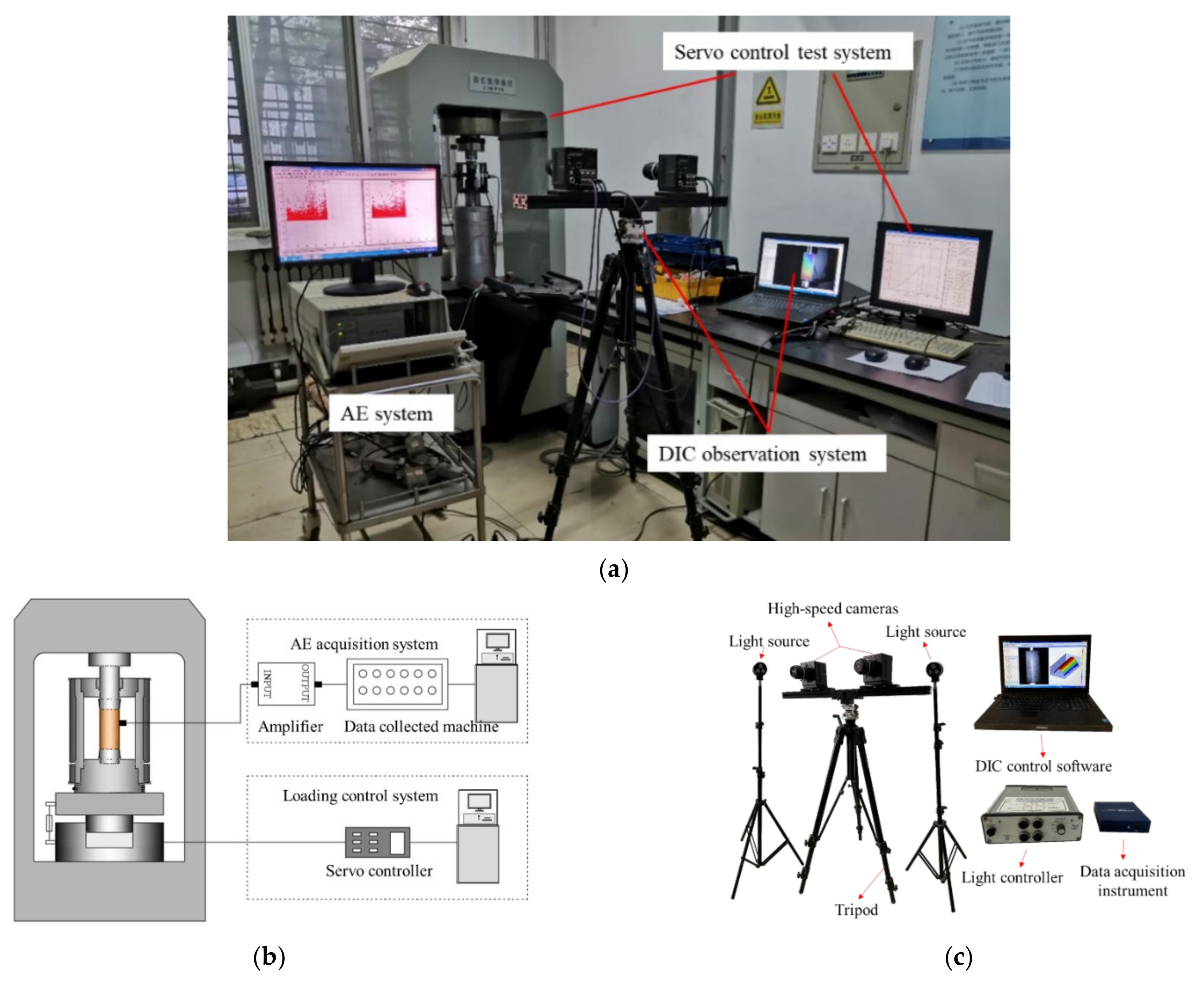
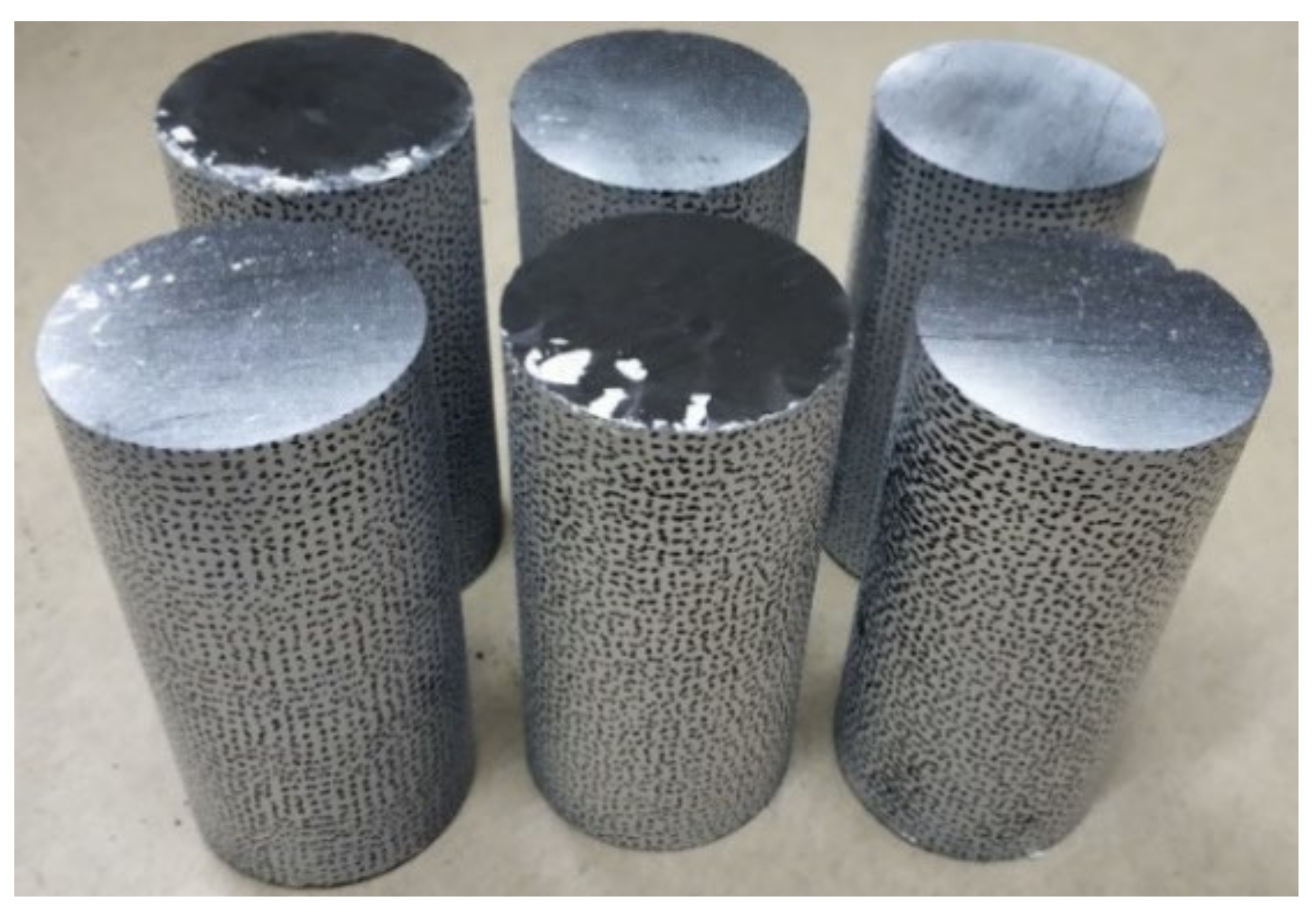


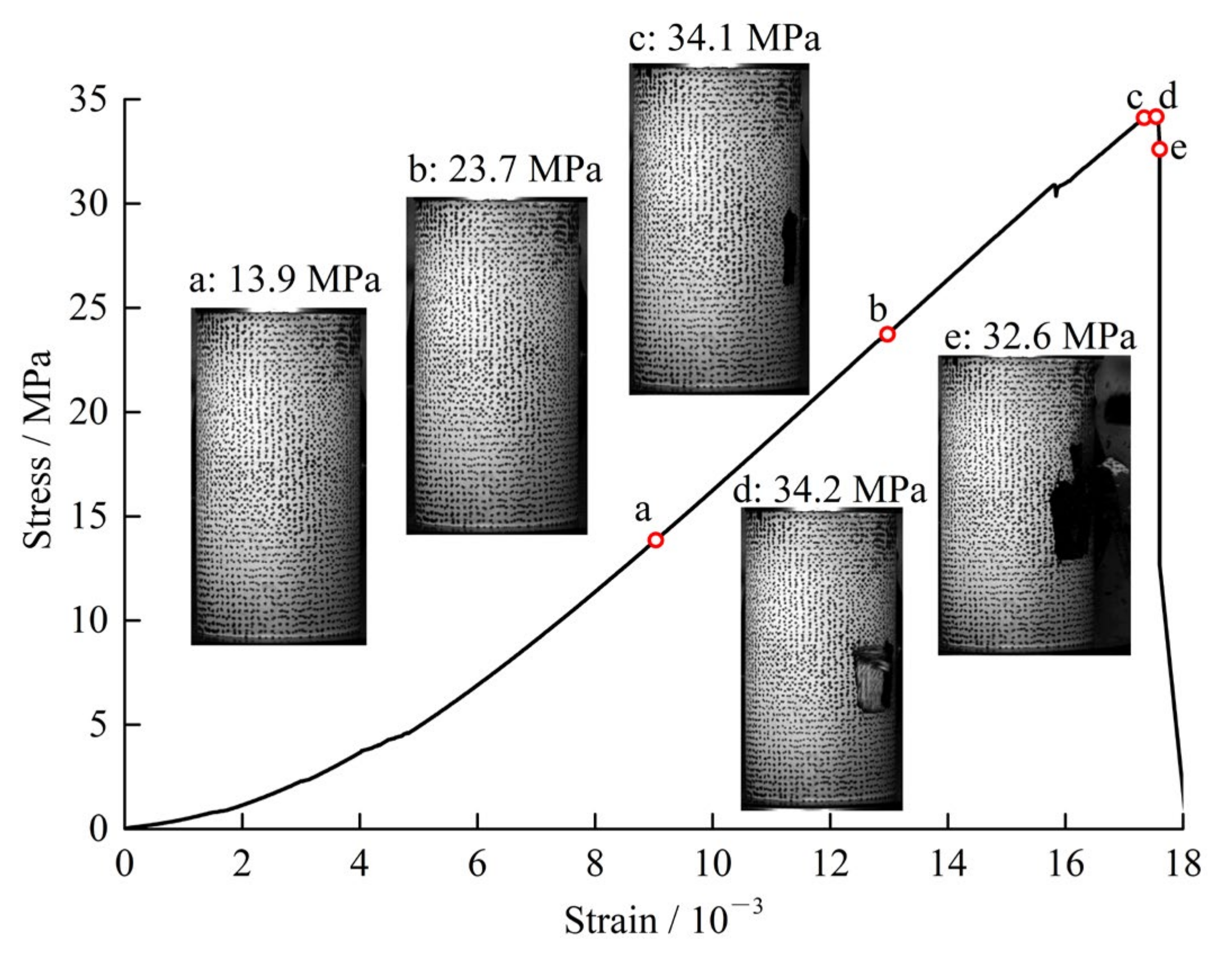

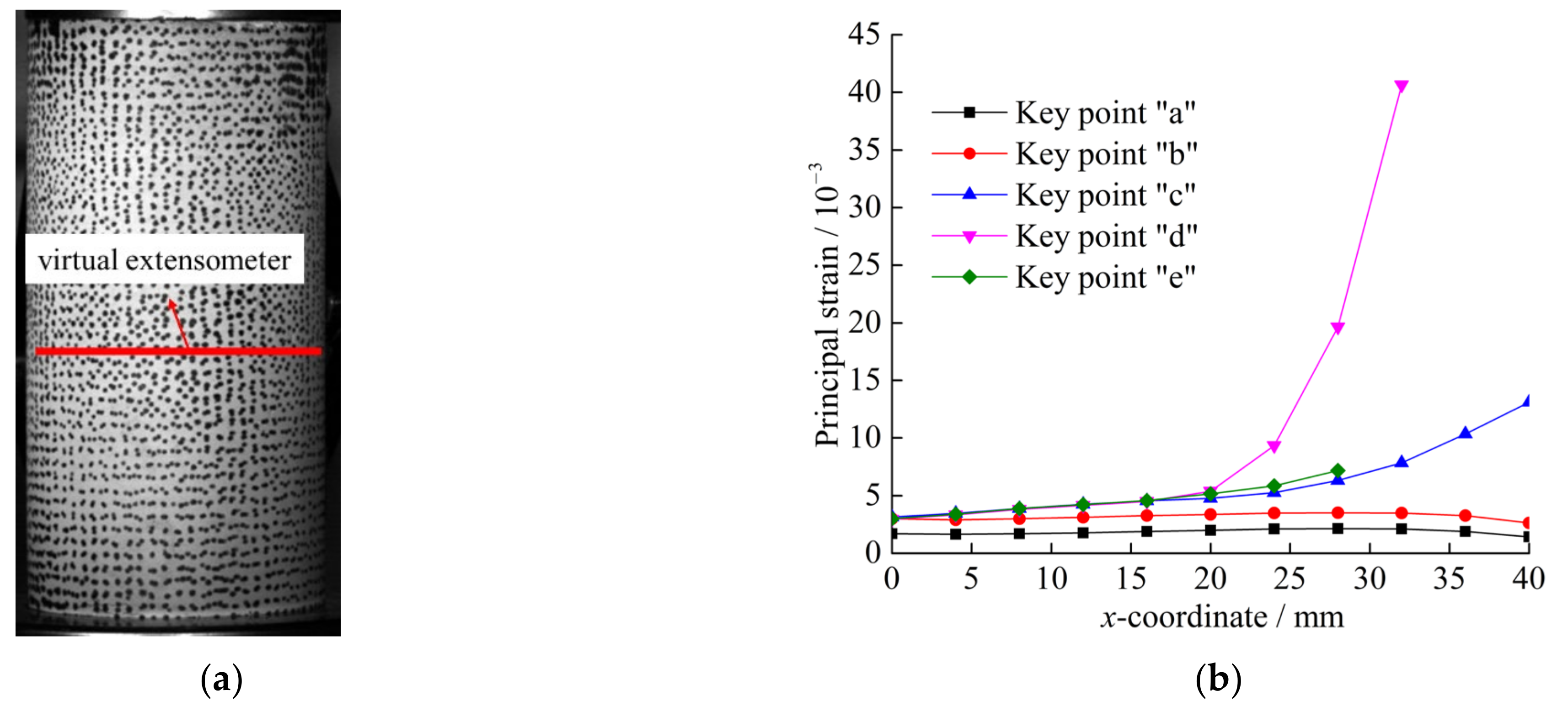


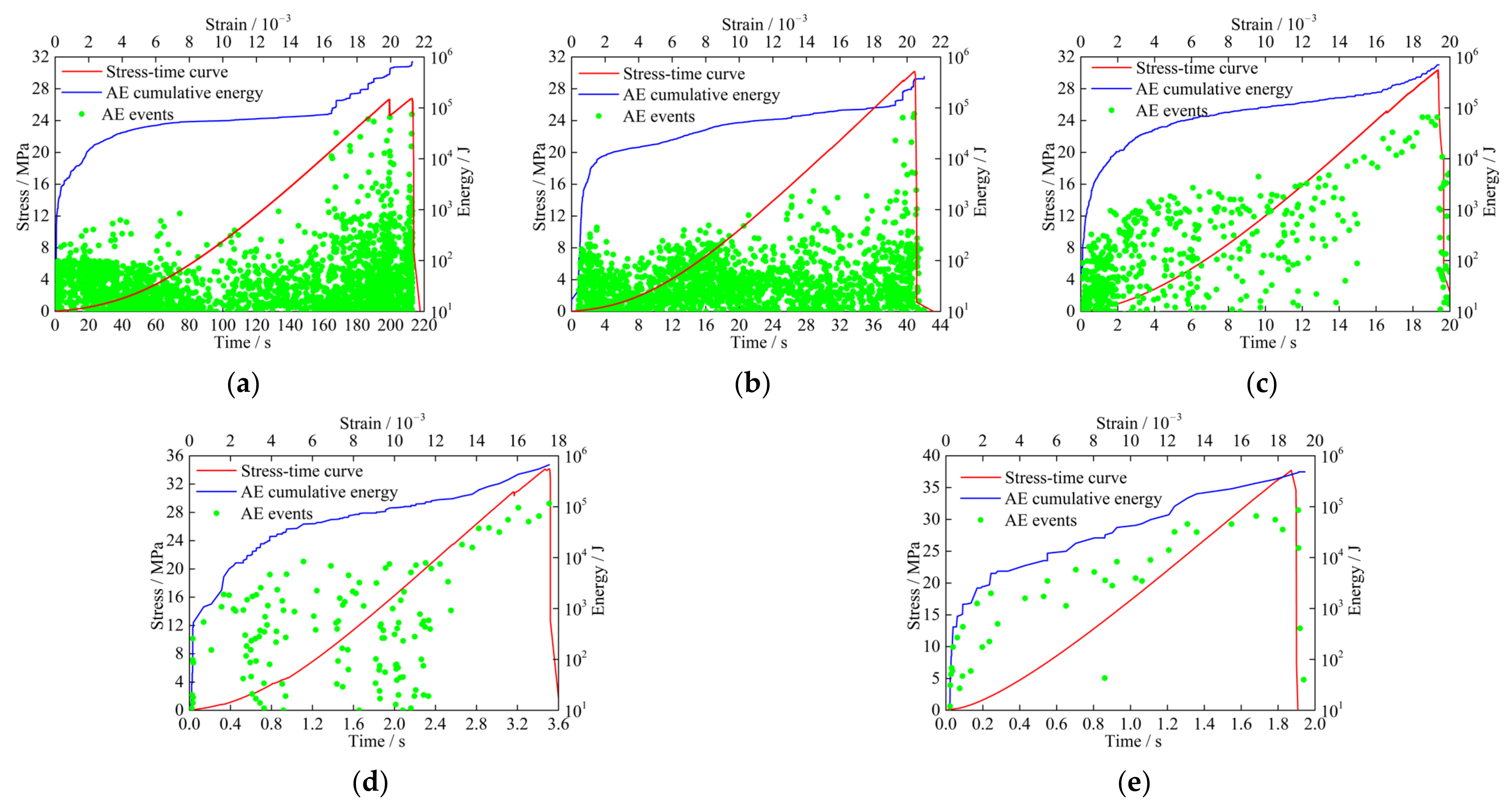


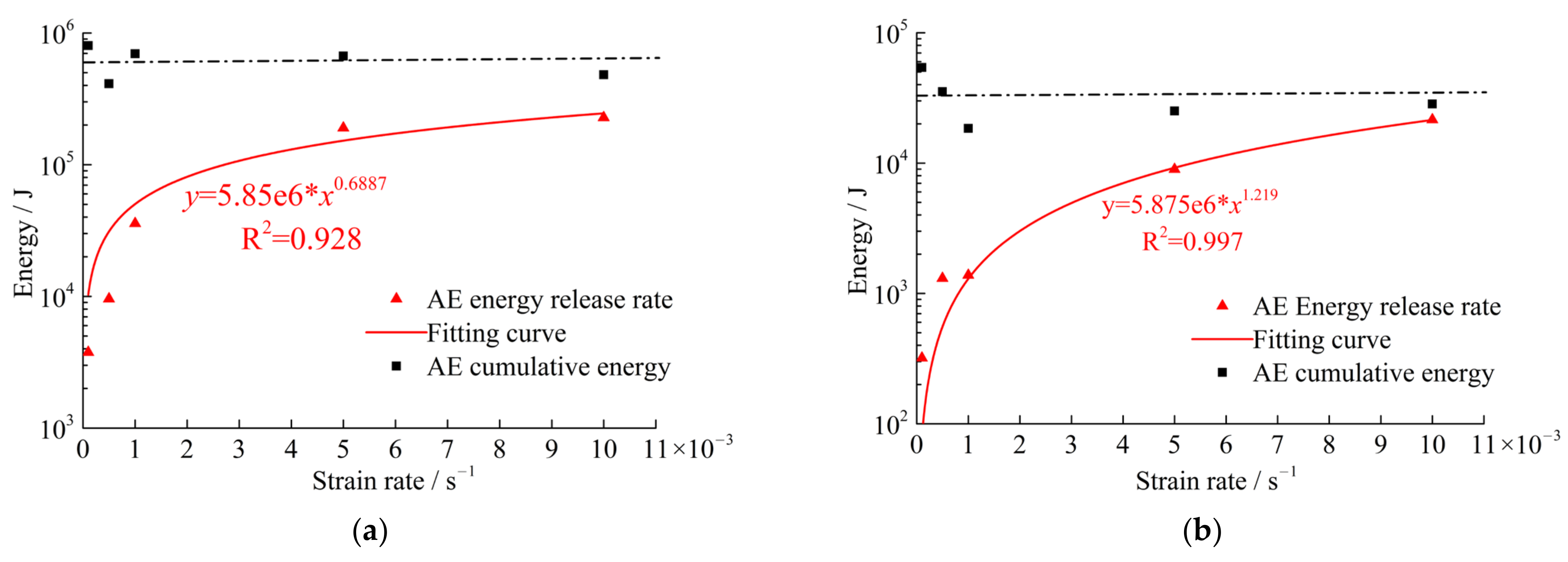
| Bedding Direction. | Specimen Number | Strain Rate/s−1 |
|---|---|---|
| Perpendicular to loading direction (horizontal bedding) | H1 | 1 × 10−4 |
| H2 | 5 × 10−4 | |
| H3 | 1 × 10−3 | |
| H4 | 5 × 10−3 | |
| H5 | 1 × 10−2 | |
| Parallel to loading direction (vertical bedding) | P1 | 1 × 10−4 |
| P2 | 5 × 10−4 | |
| P3 | 1 × 10−3 | |
| P4 | 5 × 10−3 | |
| P5 | 1 × 10−2 |
| Strain Rate/šBedding | 1 × 10−4 s−1 | 5 × 10−4 s−1 | 1 × 10−3 s−1 | 5 × 10−3 s−1 | 1 × 10−2 s−1 |
|---|---|---|---|---|---|
| Horizontal bedding | 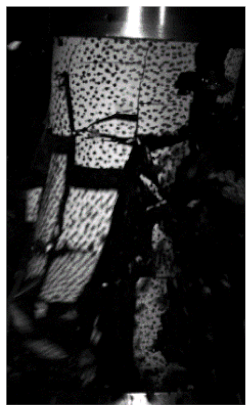 | 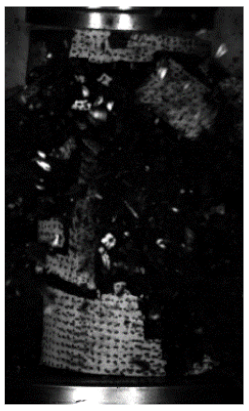 |  | 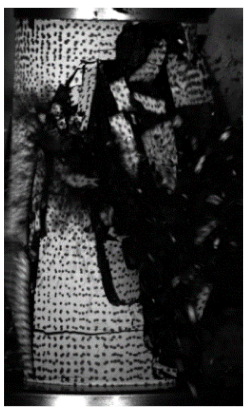 | 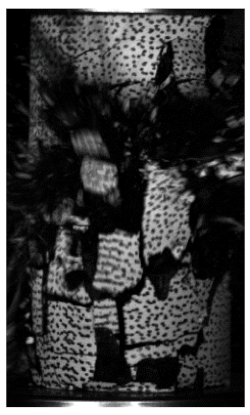 |
| Vertical bedding |  | 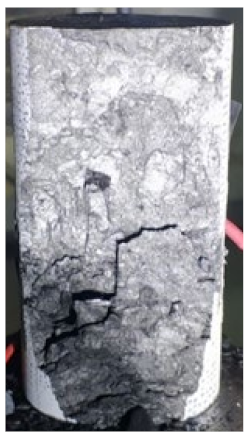 | 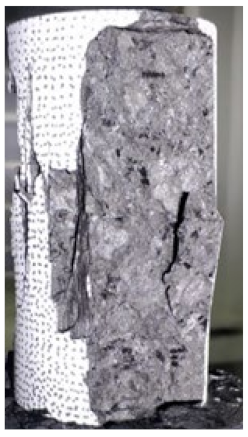 | 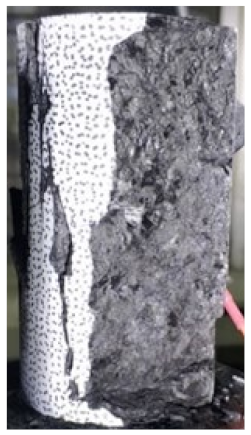 | 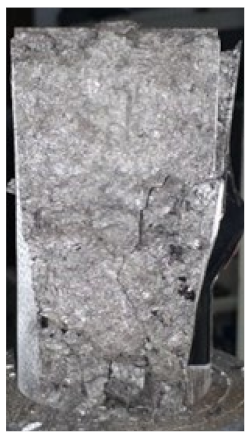 |
Publisher’s Note: MDPI stays neutral with regard to jurisdictional claims in published maps and institutional affiliations. |
© 2021 by the authors. Licensee MDPI, Basel, Switzerland. This article is an open access article distributed under the terms and conditions of the Creative Commons Attribution (CC BY) license (https://creativecommons.org/licenses/by/4.0/).
Share and Cite
Zhong, K.; Zhao, W.; Qin, C.; Chen, W. Experimental Study on the Mechanical Behavior and Failure Characteristics of Layered Coal at Medium Strain Rates. Energies 2021, 14, 6616. https://doi.org/10.3390/en14206616
Zhong K, Zhao W, Qin C, Chen W. Experimental Study on the Mechanical Behavior and Failure Characteristics of Layered Coal at Medium Strain Rates. Energies. 2021; 14(20):6616. https://doi.org/10.3390/en14206616
Chicago/Turabian StyleZhong, Kun, Wusheng Zhao, Changkun Qin, and Weizhong Chen. 2021. "Experimental Study on the Mechanical Behavior and Failure Characteristics of Layered Coal at Medium Strain Rates" Energies 14, no. 20: 6616. https://doi.org/10.3390/en14206616
APA StyleZhong, K., Zhao, W., Qin, C., & Chen, W. (2021). Experimental Study on the Mechanical Behavior and Failure Characteristics of Layered Coal at Medium Strain Rates. Energies, 14(20), 6616. https://doi.org/10.3390/en14206616







